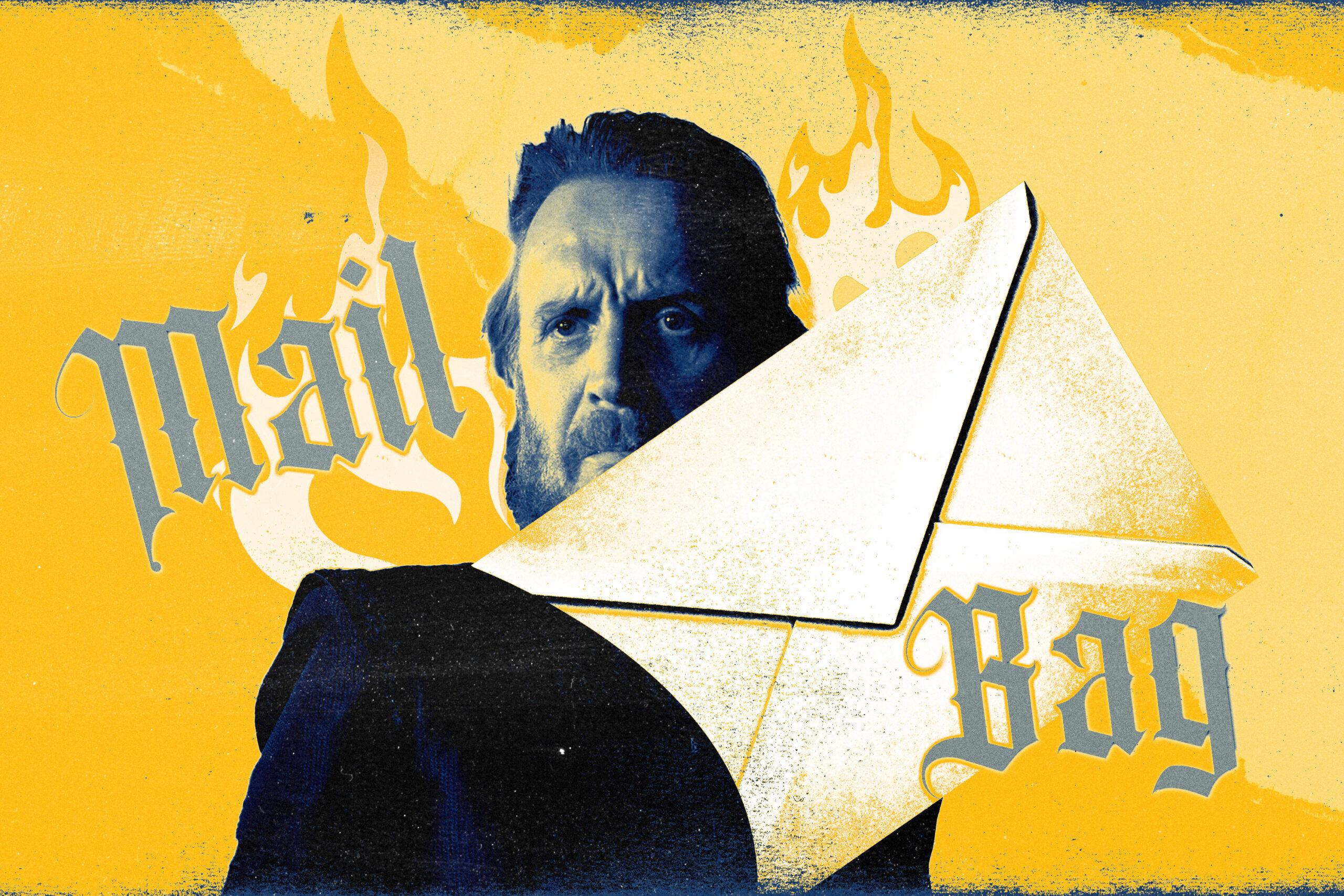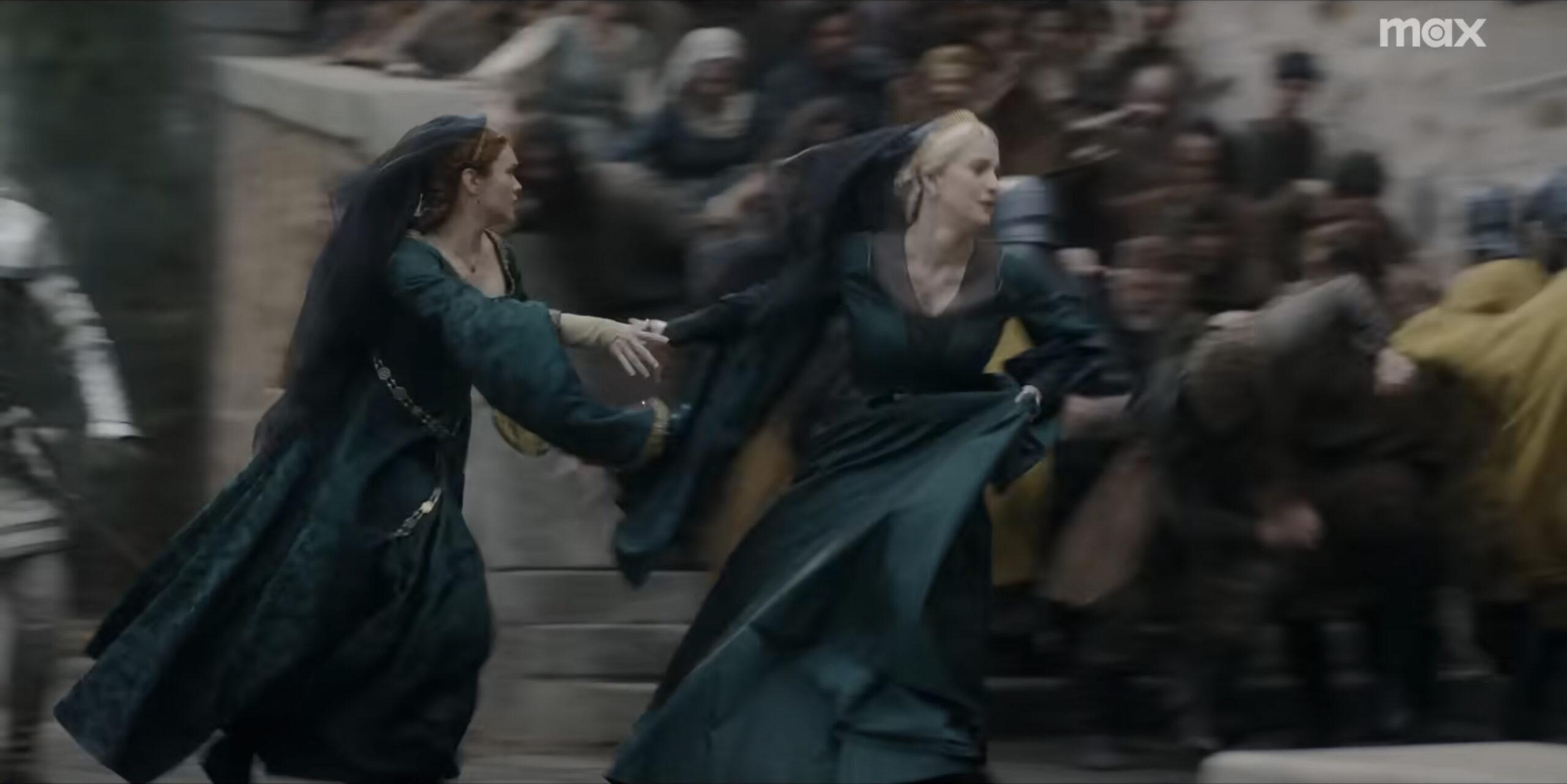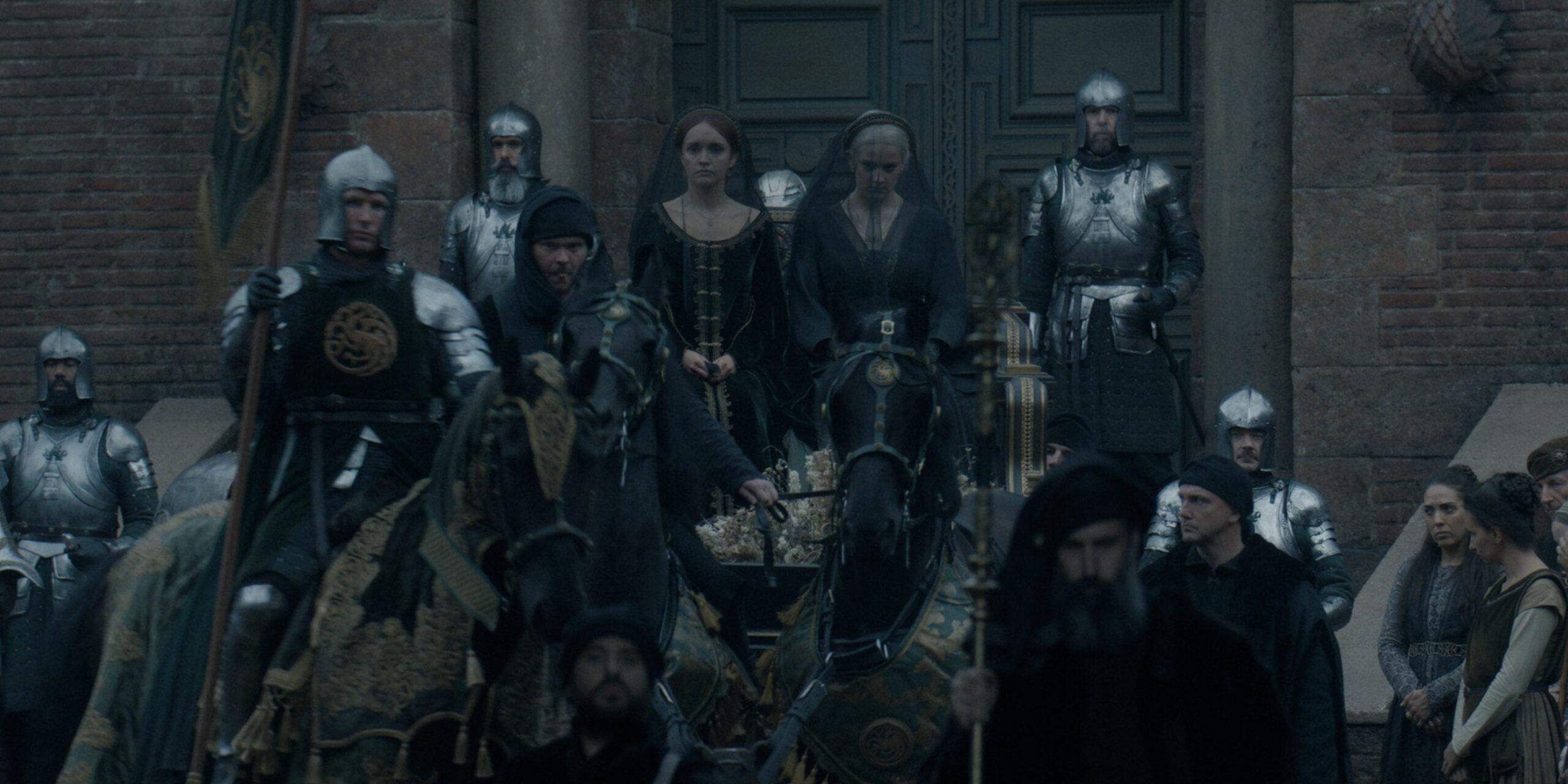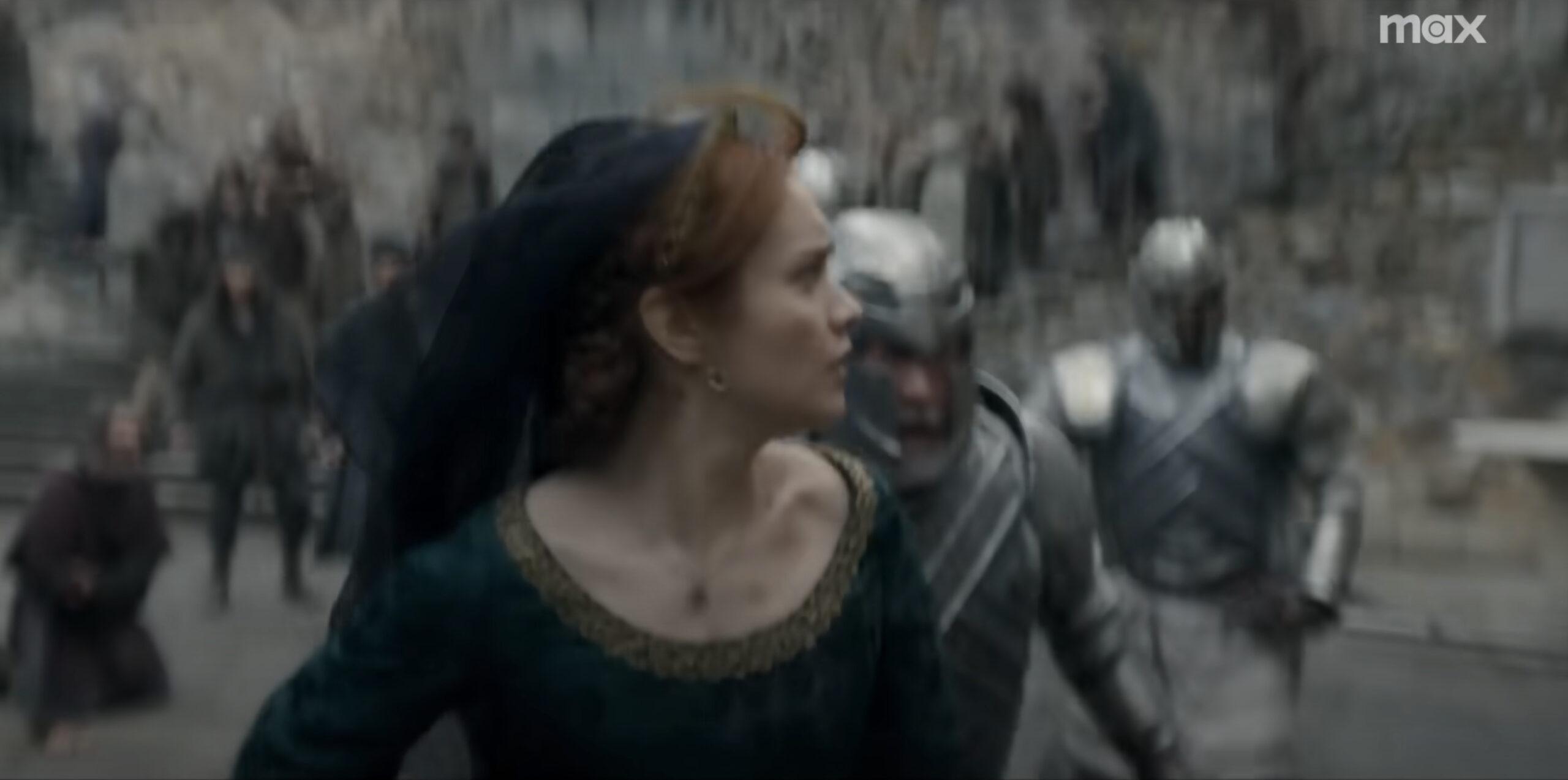‘House of the Dragon’ Episode 2 Mailbag: Show of Hands
Spoiler-free answers to questions raised by the ‘Game of Thrones’ prequel’s second Season 2 installment, including looks at Larys, Criston, and Arryk and Erryk
Criston Cole, winner! Otto Hightower, loser! I so hate when boyfriends and fathers can’t get along. Spoiler-free answers to questions about the transfer of Aegon’s hand pin lead this week’s House of the Dragon mailbag, along with thoughts on new recurring characters and the Erryk-Arryk throwdown.
To appear in future editions, message me @zachkram on Twitter/X or at zach.kram@theringer.com each week after a new episode airs.
Kevin asks, “Has there ever been a member of the Kingsguard who was promoted to another position? Do they do both jobs?”
Kevin, let me introduce you to Ryam Redwyne, one of the most famed knights in the Seven Kingdoms and “one of the worst Hands ever to serve a king,” as a maester says in A Storm of Swords.
Ser Ryam is actually the knight whose death opened up a spot on the Kingsguard at the start of House of the Dragon, which is how Criston found his way to the brotherhood. So it’s fitting that Criston would follow in his predecessor’s footsteps in assuming double duty as both Lord Commander of the Kingsguard and hand of the king.
Before Ryam took on that second title, he was a knight of great renown: the champion of multiple tourneys, the inspiration for multiple songs, and a participant in the “finest display of jousting ever seen in Westeros,” according to Fire & Blood. Two weeks after that joust, Ryam was elevated to the position of hand after the previous one—Septon Barth, who served King Jaehaerys ably for four decades—died of old age.
The result was a brief and disastrous tenure as hand, as Ryam wasn’t suited for the more nuanced and wide-ranging responsibilities of Westeros’s chief-of-staff role. “Some problems cannot be solved by hitting them with a stick,” said the grand maester at the time, and Ryam was replaced as hand after less than a year.
Legendary in the field but overwhelmed when pulling the strings? Perhaps Ryam was the Michael Jordan of Westeros.
However, one crucial difference arises when comparing Criston to Ryam, which might give Cole an advantage, even though he’s not as accomplished as a knight. When Redwyne wore the hand’s pin, the realm was in peacetime, but Cole assumes the position during a war, when a more martially inclined hand—or a “steel fist,” in King Aegon II’s words—might be preferable.
Criston might not be the best choice to help run a kingdom, but Aegon was right about one thing: As Captain Li Shang would say, Otto is unsuited for the rage of war, so pack up, go home, you’re through. Sure, Alicent’s dad can arrange a coup and orchestrate an effective PR campaign, but the standoff with Daemon all the way back in Season 1, Episode 2 proved that Otto wilts when swords and dragons get involved. Tywin Lannister, Otto’s closest Thrones comp, was a genius at both politics and war; Otto checked only one of those boxes, at best.
Tyler asks, “Does the foot still have a shot at the hand?”
Bravo for the wordplay, ser, and would you like to write my next strained-pun headline?
Larys Strong is eligible to become hand, as the position has drawn from many different backgrounds under previous kings. No masters of whisperers have yet ascended to the role at this point in Westerosi history, but Larys’s position is less established; Fire & Blood details only one known master of whisperers in Targaryen history before him. Several generations after the Dance of the Dragons, Brynden Rivers—you know him as the eventual Three-Eyed Raven up in a cave beyond the Wall—served as both hand and master of whisperers simultaneously. (Brynden’s magical powers certainly helped!)
But it’s still unclear exactly what Larys wants out of all his clandestine machinations. Does he even want to be hand, or would he prefer to work behind the scenes? In Season 1, he allied himself with Alicent, but did he do so because of a genuine fondness for her, because hers was the easiest path to whatever his endgame is, or because she had the highest-rated wikiFeet profile in the Red Keep? And now, how does her relationship with Criston—which Larys has surely sussed out—complicate that motive? Is he a man who just wants to watch the world burn?
One of my favorite passages from Fire & Blood explains this uncertainty:
The enigma that is Larys Strong the Clubfoot has vexed students of history for generations, and is not one we can hope to unravel here. Where did his true loyalty lie? What was he about? … How much of what he said and did was ruse, how much was real? Was he just a man who sailed with the prevailing wind, or did he know where he was bound when he set out? So may we ask, but none will answer.
Larys’s specific dealings with Otto underscore this puzzle. In Season 1, at Alicent’s request (sort of), Larys killed his own father and brother so that Otto could return as hand. Now, in Season 2, he asks Aegon for a quiet word so that he can plant a seed in the king’s mind to have Otto removed again—but, crucially, he doesn’t seem to pitch his own services as a potential replacement.
Larys isn’t the first character in a Thrones story to plot to remove a hand. In Thrones, Littlefinger conspires to poison Jon Arryn, the first hand of Robert Baratheon, which sets in motion the events that propel Bran from a tower, bring Ned to King’s Landing, start the War of the Five Kings, and so on. Yet compared to Larys, Littlefinger is driven by clear motivations (at least from the audience’s perspective; less so to his fellow characters): He values personal power and a romantic relationship with Catelyn Stark—or, failing that, her daughter Sansa.
For the purposes of analyzing Larys, note that Littlefinger himself doesn’t aspire to become hand of the king. Nor does Varys, in the context of another Song of Ice and Fire removal worth mentioning.
In the epilogue to A Dance With Dragons—which, although it was published in 2011, is still the most recent chapter officially added to A Song of Ice and Fire—the point-of-view character is Kevan Lannister, Tywin’s younger brother. Kevan is running the kingdom because his brother is dead, King Tommen is underage, and Cersei is awaiting trial after her walk of atonement. His title is regent, but his hand is the foolish Mace Tyrell (Olenna’s son and Margaery’s father); Kevan is essentially doing it all by himself.
And by all accounts, he’s stepping neatly into his brother’s massive shoes: As threats encircle the Iron Throne—invasions, bank loans, disputes with the Faith—Kevan slowly reasserts authority and settles the chaos in King’s Landing. So Varys shoots him with a crossbow to unravel that progress.
“You were threatening to undo all the queen’s good work, to reconcile Highgarden and Casterly Rock, bind the Faith to your little king, unite the Seven Kingdoms under Tommen’s rule,” Varys says. In other words, Varys wants the instability that Cersei fomented to continue, to better set the stage for a new king to usurp the Lannisters’ throne. But he doesn’t want to become hand himself.
Could that be happening here, if Larys suspects that Aegon will replace Otto with Criston and the realm will be all the worse for it? Is he merely punishing Alicent for her relationship with Criston by removing her support base? For now, like the students of Westerosi history, we remain vexed.
Ryan asks, “Enjoyed the episode, but was it just me or did the middle feel a bit choppy? What was the purpose of cutting to the scorpion smith and ship worker’s brother clamming?” And J asks, “Who are the brothers working on the Velaryon ships? What is their significance?”
There are two answers to these questions. The first is that these scenes offered some rare insight into the minds of the smallfolk affected by the highborns’ civil war. We’ll likely never see a powerful Targaryen monarch complain about the blockade-induced inflation of food prices, but the masses in King’s Landing and beyond probably care more about that day-to-day difficulty than the identity of the ruler on the Iron Throne.
The second answer is that the show is laying the groundwork for more important character arcs to come. To twist an old saying, a character’s appearance in one episode is happenstance; in two episodes, it is a pattern. Especially when that character is named. Not every petitioner in the throne room in Episode 1 is given a name, but Hugh, the smith, is. And in that same episode, Corlys makes sure to call Alyn by his name before departing the shipyard.
I can’t tell you anything more about these characters for now, other than to note that viewers are clearly supposed to pay attention to them.
I can, however, tell you a bit more about Hull, the town that Addam (Alyn’s brother) mentions in this episode as his place of origin. Hull is one of two major port towns on the island of Driftmark and a hub of shipbuilding and trade. On one side of Driftmark, Hull lies in the shadow of the island’s old castle; on the other side, Spicetown sits closer to High Tide, the newer castle that Corlys built.
The two towns rose in unison as Corlys’s nine voyages around the world increased Velaryon wealth and prestige—Spicetown from basically nothing, Hull from three “modest fishing villages [that] grew together into a thriving town,” Fire & Blood says. As the Velaryons grew wealthier, so did the smallfolk on their home island: The World of Ice & Fire encyclopedia notes that under Corlys’s oversight, Hull and Spicetown became “the chief ports of trade in Blackwater Bay for a time, surpassing even King’s Landing.”
Perhaps that background is why Addam sees so much promise in this new Velaryon effort at sea—while, across the Blackwater, Hugh and his fellows suffer because of the Velaryon blockade.
Jenn asks, “There was a large part of the trailer of Alicent and Helaena running through the streets of King’s Landing in mourning clothes that [wasn’t] in this episode. Is there another large funeral coming?”
Trailers frequently lie. But you’re right that several Season 2 preview materials showed Alicent and Helaena running in King’s Landing, so we should place some more stock in the idea that this image will appear on our screens at some point over the next six weeks:

Alicent and Helaena wear different clothing in that trailer shot than they do in Jaehaerys’s funeral procession. The green of their dresses looks lighter, for one. And Alicent’s dress has a different pattern in Episode 2, with a yellow design diving all the way down her front …

… in contrast to the trailer shot, where the yellow encircles her neck and doesn’t go any lower.

So unless the trailers are lying, Alicent will leave the castle and commune with the commoners again in Season 2. I look forward to it. Dragon is a better show when it gets out more.
Tom asks, “Who was your favorite Eric, was it Eric? Or Eric?”
Just be glad we didn’t have more characters with Eric-sounding names in this show, because I count no fewer than six different spellings of the name in the Thrones universe. George R.R. Martin is a real sicko. In alphabetical order:
- Arrec
- Arryk
- Erich
- Erik
- Erreck
- Erryk
None of these is my favorite quirky alteration to a modern spelling that Martin employs in his saga. (That might be “Dykk,” the name of an ironborn raider who helps Theon capture Winterfell; I should give my full rankings at some point.) But in terms of sheer variety, the Erics might win the prize.
Just for fun, I cross-referenced those spellings with the Social Security Administration’s baby name database. Using the ranking of most popular male names from 1996 (the publication year for the first A Song of Ice and Fire book), we can see that Martin largely eschewed the most popular variants of Eric—or The Ringer’s in-house alternative, Aric—in favor of more obscure (or entirely made-up) variations.
Erics in Westeros
The other characters named Arryk and Erryk, for curious readers, are twins who serve as bodyguards for the acerbic Olenna Tyrell about 170 years after the original Arryk and Erryk died. Like their namesakes, Arryk and Erryk are also identical, so Olenna calls them “Left” and “Right” instead of using their actual names. If the Arryk and Erryk who dueled to the death on Sunday had each stuck to left and right, rather than breaking the 180-degree rule, it would have been easier to tell them apart.


